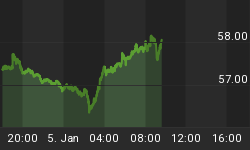One thing is absolutely clear. America's political class and the economic commentariat have learnt precisely nothing from previous recessions. After each recession we get the same old thing: an incessant call for Keynesian nostrums, a cry for greater regulation, and the usual claim that greed-driven markets cause the boom and bust. Even those few who decry Keynesian policies and call for tax cuts have no real answer for those who charge the market with being inherently unstable and therefore requiring government guidance. Their only defence is to call for a steady monetary policy that will stabilise the economy, apparently oblivious to the historical fact that this policy has never prevented a boom never mind a recession.
Now the emergence of the current recession followed the same pattern as the recession that Bush 'inherited' from Clinton. I outlined in previous articles how Austrian economic analysis successfully described that process. Given the present situation and the confusion that now abounds it is necessary for us to go over old ground.
It should be patently clear to those who followed my reasoning at the time that the economic facts neatly fitted the approach of the Austrian school of economics. According to the Austrian analysis the recession would first make itself felt in the higher stages of production and then work its way down the production structure. Figures from the NAPM (National Association of Purchasing Management) in the middle 2000 gave considerable support to this view. The pattern clearly fitted the Austrian view.
The NAPM Index showed that manufacturing had contracted for the ninth month in a row. Moreover, manufacturers accelerated the liquidation of inventories in April 2000, bringing the Inventories Index down from 44.2 per cent in March to 39.6 per cent in May 2001. In late 2001 another NAPM report showed that economic activity in the manufacturing sector had fallen for the 15th consecutive month in October. Leaving no room for Keynesian Pollyanna's to find a chink of light, it also revealed that the overall economy had ground to a halt. But what is of the strictest importance about both NAPM manufacturing findings is that they narrowed the beginning of the recession down to about the middle of 2000. (Well guess who was the then-president?)*
Now the index registered employment as negative from January 2001. The meaning of this was brought home when it was reported that 223,000 jobs were lost in May 2001, the biggest drop in ten years, raising the US April unemployment rate to 4.5 per cent. This was on top of a loss of 53,000 jobs in April. (Note the rate at which the jobless increased. As an aside, also note how the ever so honourable leftist media blames Bush for the job losses).
Meanwhile, average hourly earnings rose 0.4 percent in April after a 0.4 percent increase in the previous month. There was nothing unusual here. The classical economists also observed that there was a tendency for wages to continue rising in the last phase of a boom. Eventually the recession struck at the rest of the economy, including services, but to a lesser degree. In early May the NAPM revealed that its non-manufacturing index had dropped three points in April to 47.1. This was the lowest monthly reading in the survey's four-year history, making it a 14 point fall since December 2000.
What is particularly interesting is that the NAPM survey's indicated a general contraction. So what happened to the first quarter of 2001's annualised growth rate of 2 per cent? It was never there. The actual figure for the quarter was 0.5 per cent. As others pointed out at the time, most of the 2 per cent figure came from an improved trade deficit, without which growth would have been negligible. In addition, if other government inflation figures had been used GDP would have been negative, which means the deflator was running ahead of GDP. In other words, the economy was contracting and not growing. (This should alert readers to the danger of relying entirely on GDP figures.)
Some feared the worst and drew dismal comparisons with the Japanese economy. Others argued that the US economy is more sensitive to interest rate cuts. But this is to say no more than the American economy is more flexible than the Japanese economy and that American governments, unlike the Japanese, have been willing to allow the necessary, or at least many, economic liquidations to take place. (Unfortunately Obama has changed tack.) Debt, like overvalued shares, was not quite the problem that many commentators thought it would be. The real problem was not debt but the process by which massive debts are incurred. Unless this problem is dealt with more recessions, bubbles and market crashes are guaranteed. (This is exactly what happened.)
That the lesson was not being learned at the time, and still hasn't, was made clear by Robert McTeer of the Dallas Fed who encouraged people not to save but to keep on spending. (This is the kind of dangerous Keynesian nonsense that still has some people making the Keynesian argument that Japan's problem is that it saves too much.) What better way to keep people spending than supplying them with oodles of cheap credit? But the time comes when the discoordinating effects of the cheap money policy can no longer be avoided. This is the situation today.
Despite the fact that the evidence fits the Austrian explanation of the so-called business cycle it is still ignored by the economic commentariat. These are the people who pride themselves on being informed by the facts and not ideology. But is that really so?
*I am not suggesting that Clinton caused the recession that Bush 'inherited', far from it. As I have said a great many times before, it's a question of lousy economics, especially with respect to monetary theory.















